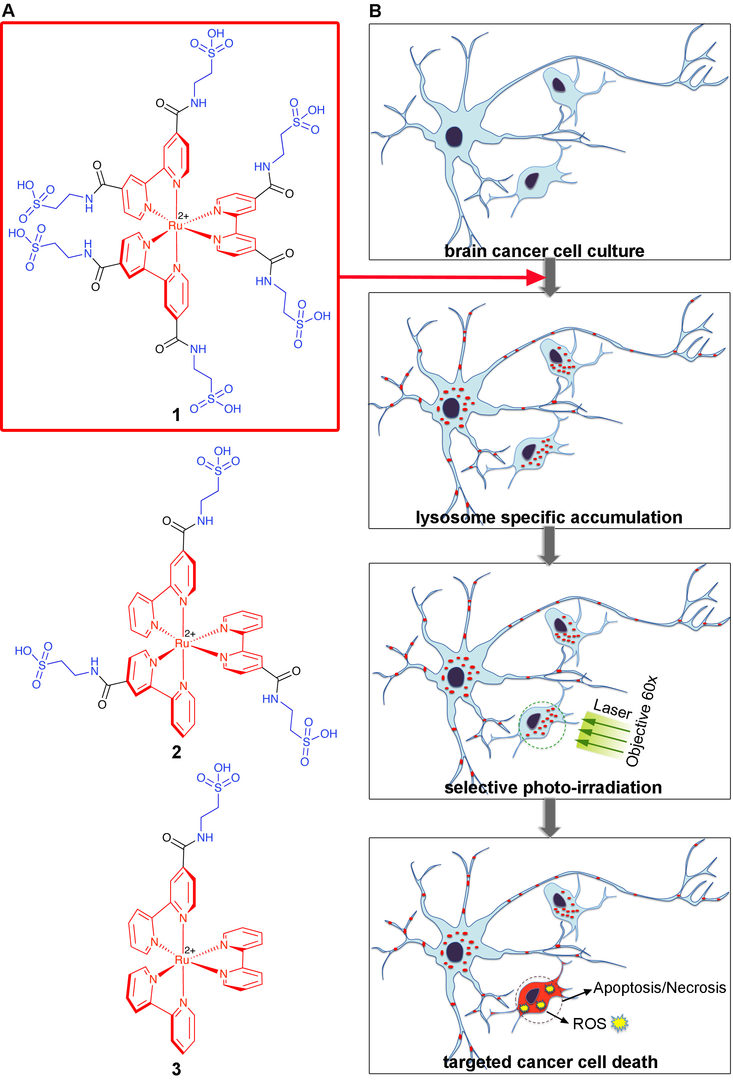FY2017 Annual Report
Full Unit Name
Assistant Associate Professor First Last

Abstract
Hydrogels are soft materials with distinct three-dimensional (3D) networks capturing large water content. The similarity of hydrogels to natural tissue has made them the most promising biomaterials for use in human bodies. During the past several decades, hydrogels have attracted considerable attention from scientists in different research fields. With their contributions, the research in this field has experienced significant advances both in content and in style. Organometallic hydrogels, one special category of hydrogels in which metal ions participate in the 3D network, have become one of the pioneering types of soft materials. Endowed with the unique properties of metal ions and coordination chemistry’s structural diversity, this type of material has shown great potential for intelligent materials as part of a smart future.
1. Staff
- Dr. Guanying Li, Postdoctoral Fellow
- Dr. Enming Du, Postdoctoral Fellow
- Dr. Yunhui Zheng, Postdoctoral Fellow
- Dr. Weiji, Postdoctoral Fellow
- Dr. Dingze Mang, Postdoctoral Fellow
- Sona Roy, Graduate Student
- Shijin Zhang, Graduate Student
- Xunwu Hu, Rotation Student
- Sachie Yukawa, Rotation Student
- Swathie, Rotation Student
- Xia Wu, Intern Student
- Hitomi Shinzato, Administrative Assistant
2. Collaborations
2.1 Ru-complex for photodynamic therapy
-
Description: we synthesized a series of taurine (a natural amino acid)-modified polypyridyl Ru-complexes. These complexes showed lysosome-specific intracellular accumulation. Symmetrical taurine modification of the complexes not only enhanced their intracellular affinity to cancer cells, but also boosted the quantum yield in a pH-independent manner without sacrificing water solubility. Regarding the performance of Ru-complex 1 with prominent ROS-generation ability in vitro, symmetrical taurine modification was shown to be a simple (but effective) strategy for Ru-complex construction as a cytosolic photosensitizer for PDT in cancer therapy with promising potential in BCT.
- Type of collaboration: Joint research
- Researchers:
- Professor Peng Wang, Chemistry Department, Renmin University of China
3. Activities and Findings
3.1 Subsection Title If Necessary
The precision and efficacy of photodynamic therapy (PDT) is essential for the treatment of brain tumors because the cancer cells are within or adjacent to the delicate nervous system. Taurine is an abundant amino acid in the brain that serves the central nervous system (CNS). A taurine-modified polypyridyl Ru-complex was shown to have optimized intracellular affinity in cancer cells through accumulation in lysosomes. Symmetrical modification of this Ru-complex by multiple taurine molecules enhanced the efficiency of molecular emission with boosted generation of reactive oxygen species. These characteristic features make the taurine-modified Ru-complex a potentially effective photosensitizer for PDT of target cancer cells, with outstanding efficacy in cancerous brain cells.

Figure 1: A) Chemical structures of taurine-modified Ru-complexes 1, 2, and 3. (B) Schematic illustration of PDT targeting cancerous brain cells using Ru-complex 1 as the lysosome-specific photosensitizer.

Figure 2: Time-dependent photo-irradiation (450 nm) 0.45 mW) of Ru-complex-induced DHE-derived fluorescence intensity in citrate buffer (ph = 4.5) (A) and PBS (pH = 7.4) (B). Fluorescence images of ROS formation in PC12 cells before (C) and after (D) ohoto-irradiation (ROS formation in indicated by DHE-derived dluorescence).

Figure 3: (A) Photo cytotoxicity of Ru-complex 1 in F98, A375, HeLa and A549 cells. (B) FLuorescence image of a cell viability imaging assay applied in F98 cells.
4. Publications
4.1 Journals
- Enming Du, Xunwu Hu, Sona Roy, Peng Wang, Kieran Deasy, Toshiaki Mochizuki and Ye Zhang.* "Taurine-Modified Ru(II)-Complex Targets Cancerous Brain Cells for Photodynamic Therapy" Chem. Commun. 2017, 53, 6033-6036
- Wei Ji, Shijin Zhang, Sachie Yukawa, Shogo Onomura, Toshio Sasaki, Kun'ichi Miyazawa, and Ye Zhang.* "Regulate Higher-order Organization through the Synergy of Two Self-sorted Assemblies" Angew. Chem. Int. Ed. 2018, 57, 3636-3640
4.2 Books and other one-time publications
Nothing to report
4.3 Oral and Poster Presentations
([NOTE] *Seminars and workshops by OIST faculty/unit members (either with or without other speakers), either at OIST or at other institutions than OIST, should be included in the 4.3 Oral and Poster Presentations.
- Efghijk, S., Uxyaabc, E., Defgh, K., Cdefg, HI. Article Title Here as It Appears in the Publication. Poster or Presentation Title in Italics, Event 2010, City Name, Country, FromDate-ToDate (2011).
- Efghijk, S., Uxyaabc, E., Defgh, K., Cdefg, HI. Article Title Here as It Appears in the Publication. Poster or Presentation Title in Italics, Event 2010, City Name, Country, FromDate-ToDate (2011).
5. Intellectual Property Rights and Other Specific Achievements
Nothing to report
6. Meetings and Events
6.1 Design and Functionalization of Supramolecular Assemblies, Liquid Crystals, and Macromolecules
- Date: June 06, 2017
- Venue: OIST Campus Centre Building C209
- Speaker: Prof. Takashi Kato (Tokyo University)
6.2 Triplet Energy Migration and Photon Upconversion in Molecular Self-Assemblies
- July 03, 2017
- Venue: OIST Campus Lab3 C700
- Speaker: Prof. Nobuo Kimizuka (Kyushu University)
Nothing to report.



